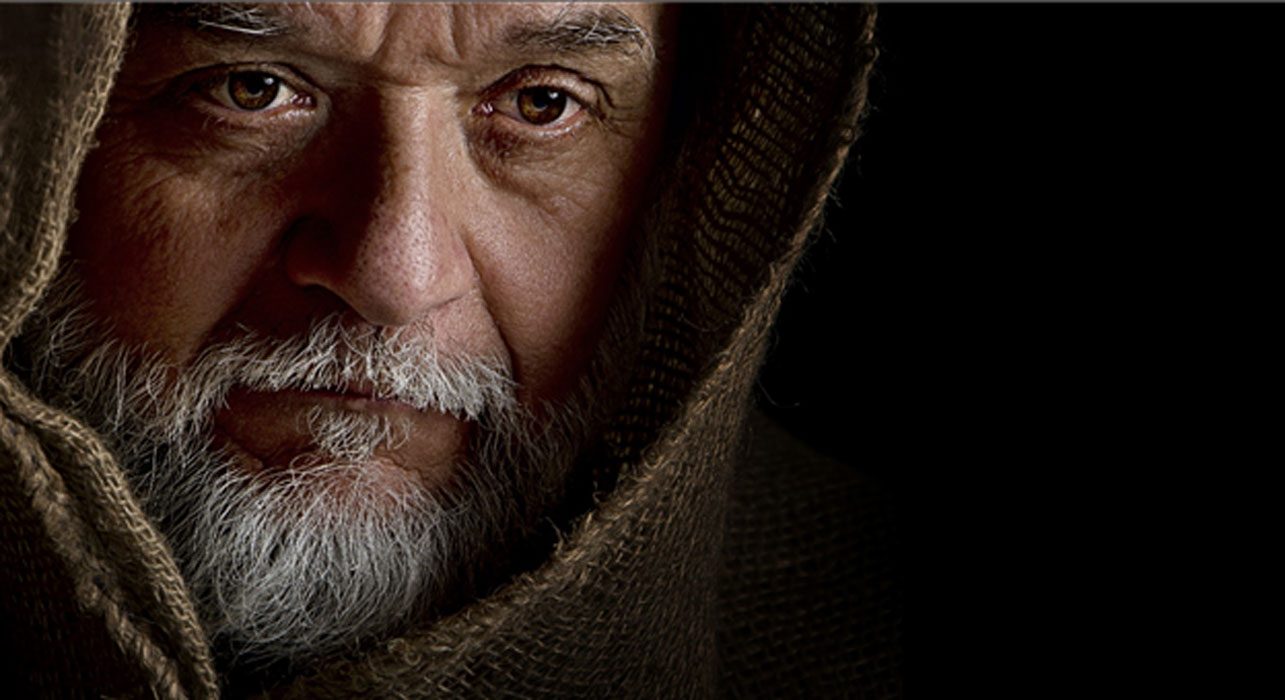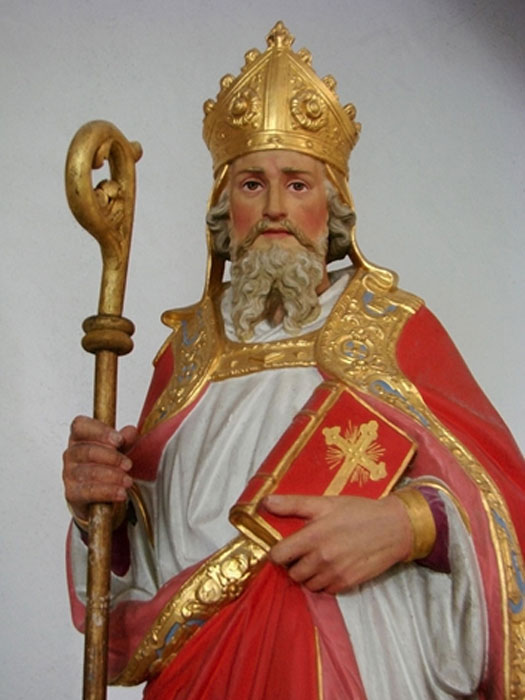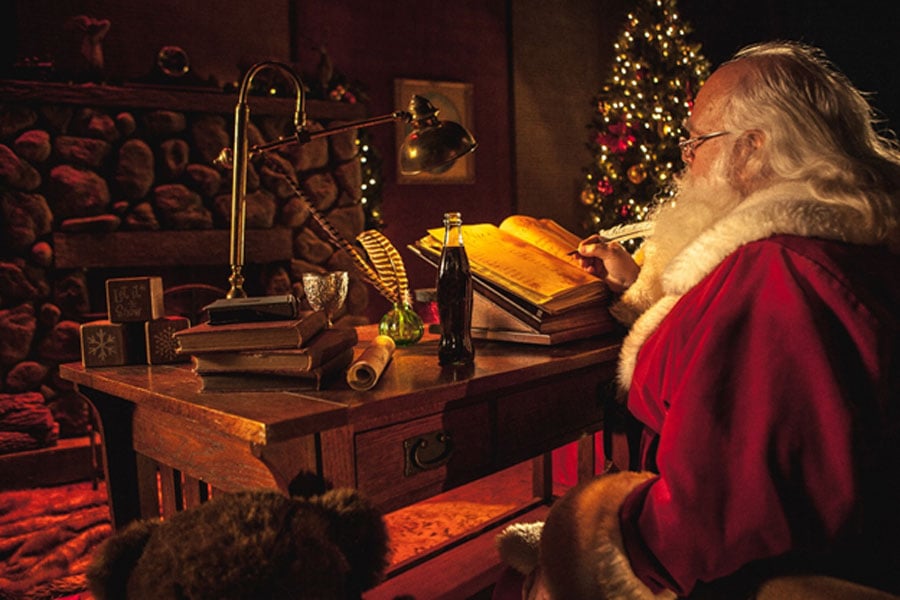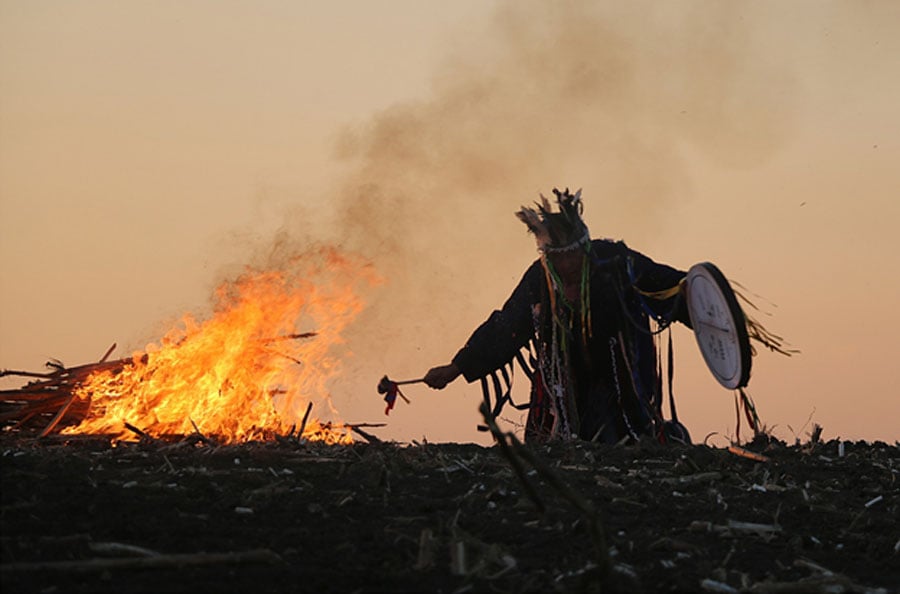
Santa Claus – A Siberian Shaman on a Magic Mushroom Trip?
The idea that there is a direct link between our modern representation of Santa Claus and historic shamanic practice in Siberia is not new. It seems to have been first suggested by the historian of religion, Mircea Eliade in the 1950s, in his compendious work on global shamanism. He did not develop the idea, but in the last three decades the hypothesis has gained traction as a feasible explanation for some of the magical attributes of Santa. Santa Claus is, after all, a very incongruous figure to be associated with Christmas, and we perhaps need to look a little deeper into his origins in order to understand where the story and imagery came from and what it might mean.

Nikolaus von Myra (Vassil / Public Domain)
The Conventional Genesis of the Santa Claus Tradition
The name Santa Claus is derived from the Dutch term for St Nicholas: Sinterklaas. The hagiography of St Nicholas is based on the life of a bishop of Myra, in modern day Turkey, who lived circa 270 to 343 AD. The saint had a reputation for giving secret gifts, giving rise to the emulation of this practice in medieval Europe on his feast day of 19 December according to the Julian Calendar (moved to 6 December with the adoption of the Gregorian Calendar in 1582). He is also the patron saint of children, and the Dutch Sinterklaas developed into a character, played by someone from each community, who would surreptitiously deliver gifts to children on the feast day. Dutch settlers to the United States seemed to have brought the custom with them, although these celebrations had apparently diminished by the late 18th century in both Europe and America. But in 1812, the writer Washington Irving reinvigorated the tradition in his A History of New York, where he inserted a dream sequence involving St Nicholas flying through the sky at Christmas in a cart dispensing gifts, a concept he apparently derived from the tales that Dutch settlers told about St Nicholas.

Santa Claus at Desk with Cola Bottle (Cinestock / Adobe Stock)
This story was picked up 11 years later by Clement C Moore in his poem A Visit from St Nicholas - later popularized as T’was the Night Before Christmas - thereby ensuring the continuation of the Santa Claus institution, albeit shifted to 24/25 December. The tradition was consolidated further in 1931, when Coca-Cola used an image of Santa to promote and advertise their beverage. This image of a jolly, white-bearded Santa is the benchmark for his current representation. However, many of the motifs included in the Santa mythos seem to have been tacked on to the Christian St Nicholas story from elsewhere, informing the conventional observances originally carried out on his feast day, later transferred to Christmas. It would appear there is a possibility that these motifs have perhaps been disseminated from a non-Christian shamanic culture, specifically Siberian shamanism.
Shamanism, Fly Agaric and the Metaphysical Roots of Santa Claus
One needs to understand what Siberian shamanism was/is and how some of its practices link so intimately into the Santa Claus motifs. Eliade described the primary function of shamanism as achieving a ‘technique of ecstasy’ where shamans are able to alter their states of consciousness in order to consort with a metaphysical reality, primarily for the sake of aiding their communities back in consensus reality. He suggests that shamanism was the original spiritual belief system in every part of the globe and has informed all later religions in a variety of ways. Siberian shamanism, as practiced by the indigenous Tungusic people, known as the Evenki, certainly adheres to Eliade’s description, and there are numerous practices within this culture that may insinuate links to our conception of a supernatural Santa Claus.

Shamanic drumming (Enver Sengul/ Adobe Stock)




